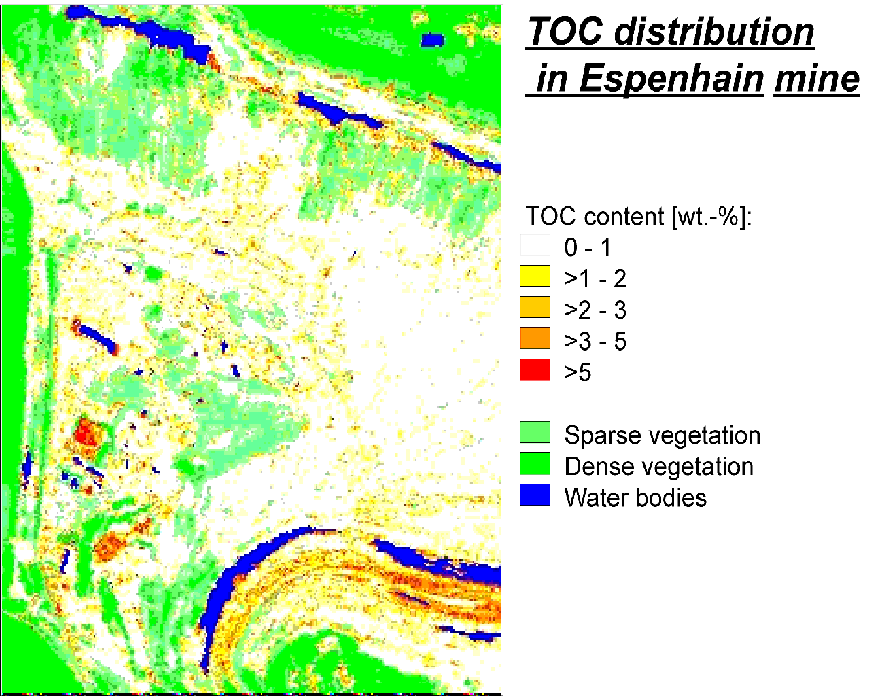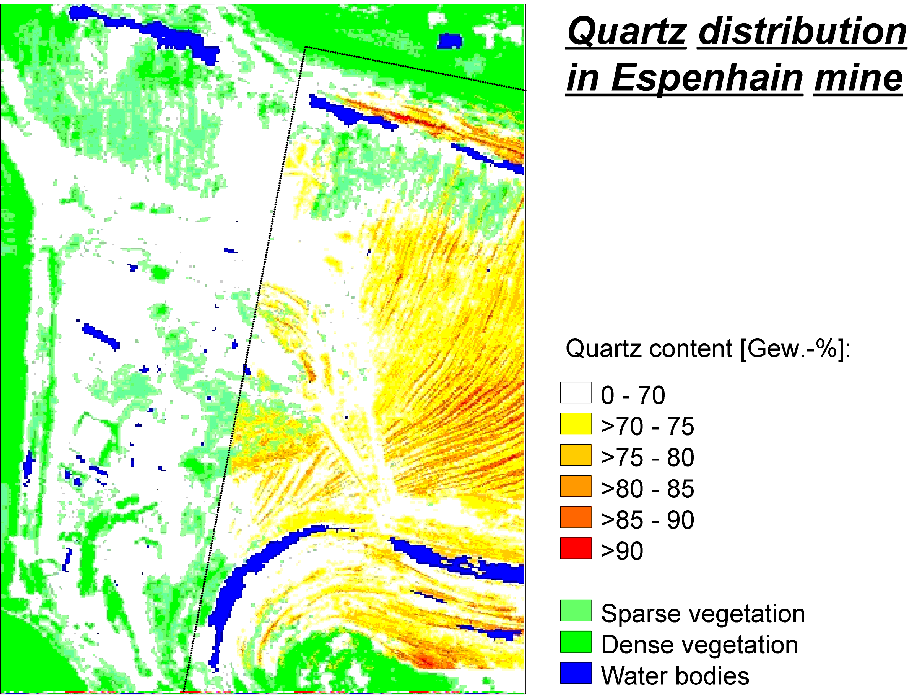Mineral Quantification of Lignite Overburden Dumps



Eastern Germany's demand for lignite and its products has dropped significantly, as an economic result of the 1989 political changes. Thus, most of the open lignite mining pits have been closed in the early 1990's. This resulted in a great need for recultivating and reclamating the devastated land of the abandoned mines. The suitable architecture of the desired post-mining landscapes and the type of utilization has to be determined by taking into account mineralogical, physical and chemical parameters of the existing mine dumps and tailings. Central Germany's lignite mine tailings are predestine to the application of remotely sensed data to derive such parameters because of their number, size and often limited accessibility.
The evaluation of hyperspectral data rather than common broad band sensor data offers a greater variety of possible quantitative approaches because distinct absorption features in the reflectance spectra of typical minerals are resolved. Using data of the airborne sensor DAIS 7915 our group is working on the analysis of Espenhain's and Zwenkau's mine tailings.
Objectives:
Chemical and mineralogical analysis of the mine tailings localisation and evaluation of temperature anomalies due to pyrite oxidation.
Means:
Analysis and interpretation of DAIS 7915 data. Chemical and mineralogical laboratory reference analyses. Field and laboratory reflectance measurements and spectroscopic studies of typical mine tailings materials (VIS/NIR/SWIR/TIR).
Results:
The results have already been presented in a number of publications (see below). The Espenhain mine is mapped for kaolinite, organic carbon, and quartz contents, whereas in the Zwenkau mine the mapping of pyrite, organic carbon, and quartz contents is conducted. Each parameter is quantified into several classes within the natural concentration range. These results are obtained by using laboratory spectra and reference analyses of field samples to derive correlations between the sample composition and certain spectral features (i.e. absoption bands). The regression equations are then transferred to geometrically and atmospherically corrected hyperspectral data of the DAIS 7915.
For the Zwenkau mine, a surface temperature map is derived by seperating temperature and emittance from a night-time data-set. This temperature map shows increased temperatures in the young sections of the overburden dumps, which are very likely due to the increased rate of exothermic pyrite oxidation.
These studies are performed as a part of a BMBF financed project under contract of PT Wassertechnologie und Schlammbehandlung, Forschungszentrum Karlsruhe.

